KITSAP PENINSULA (Day 13 - part 1)
We spent the day exploring up the Kitsap Peninsula. The large piece of land, located in Puget Sound, is named after Kitsap (or Ktsap), a powerful chief of the Suquamish tribe from 1790 to 1845.

We are here, at Silverdale.
Our first stop was the quaint town of Poulsbo... or Little Norway.
The Suquamish people lived here for at least 5,000 years, but were relocated to a reservation north of here by the Treaty of Point Elliott in 1855. The first Scandinavians arrived in the 1880's after attempts to establish farms in the Midwest. The landscape here was similar to their native homelands. The town was founded by Jorgen Eliason of Norway. Its intended name was Paulsbo (or "Paul's place"), after a Norwegian village, but it got misspelled somewhere along the way and officially became Poulsbo in 1907.


Viking city ... and the Sons of Norway

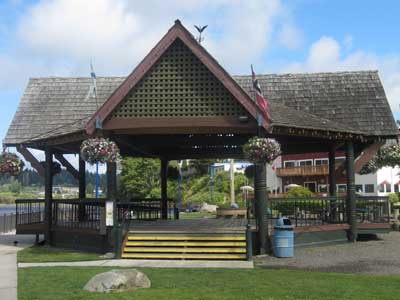
The harbor ... and park


More Scandanavian themes
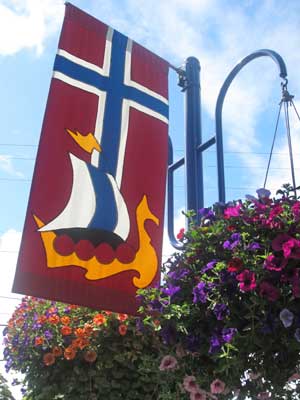







The bakery... with its prezle-shaped door knob!
We continued north...
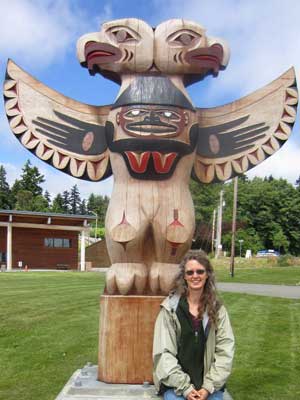
A totem pole at Suquamish


We watched the ferry come in at the Port of Kingston.


We headed toward Point No Point. ... A house along the way
The M/V Jupiter Inlet was a 186-foot military oceangoing tugboat built in 1943. As a result of WWII, a pressing need developed for these hearty tugs... to tow damaged vessels, move floating drydocks over thousands of miles of ocean, and serve as emergency cargo carriers. It was sold for scrap in 1971 and part of it ended up as this house!
Point No Point was named by Charles Wilkes during his exploration of Puget Sound in 1841. Its strange name comes from the fact that it appears much less of a point at close range (No Point) than it does from a distance (Point). The Hahd-Skus or Point No Point Treaty was signed here in 1855, transferring land from the S'klallam, Sko-ko-mish, To-an-hooch and Chem-a-kum tribes to the US government. The lighthouse was then built in 1879.


The fifth-order Fresnel lens was cut in France and shipped around the southern tip of the Americas in 1880. The lighthouse was struck by lighting in 1931, requiring the cracked prism to be replaced.




On the beach next to the lighthouse
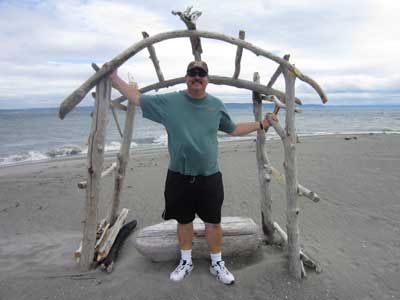
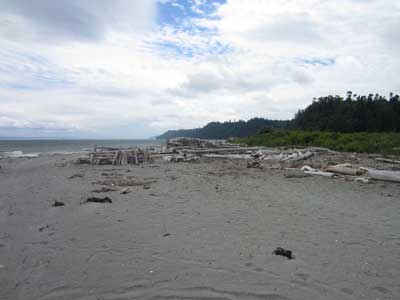
Port Gamble, originally known as Teekalet, was renamed for the bay which gave it access to ocean commerce. It began in 1853 to support a lumber mill company... although legally the land wasn't theirs until the 1855 Point No Point Treaty became official. As part of an agreement, however, the mill company did give them jobs and lumber to build new homes, community facilities and a school.


Many charming old houses



Built in 1871-72, the Franklin Lodge No. 5 is the oldest active Masonic lodge in Washington.


The general store

This Camperdown Elm was planted in 1875. In 1640, the Earl of Camperdown in Dundee Scotland, grafted a branch he had found to a Scotch Elm tree... creating the first Camperdown Elm. Since the tree cannot self produce, every Camperdown Elm in the world is part of the original and must be grafted to a Scotch Elm to get started. When the graft starts to grow, the Scotch Elm branches are cut off, leaving only the Camperdown Elm.


Old logging equipment... and the anchor from the sunken lumber schooner "War Hawk"
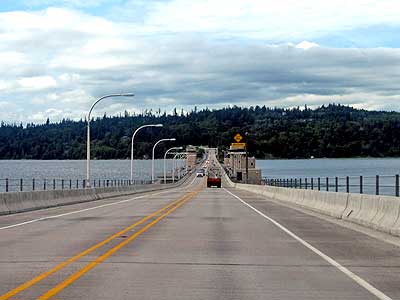
Leaving the Kitsap Peninsula over to the Olympic Peninsula by means of the Hood Canal Bridge
return • continue

